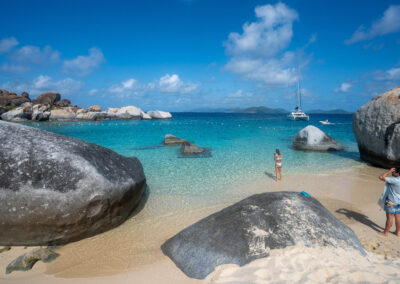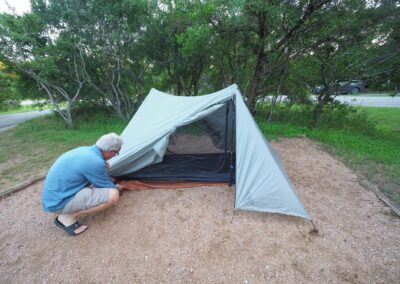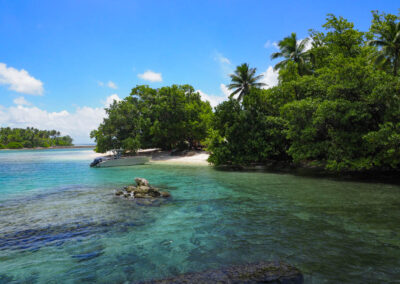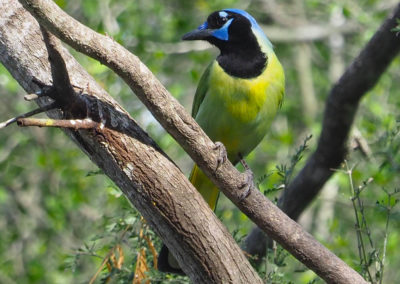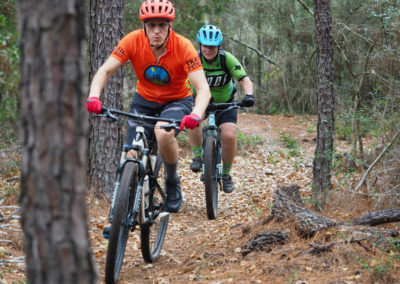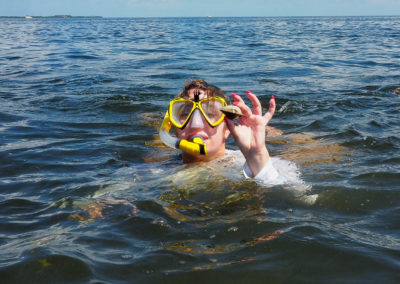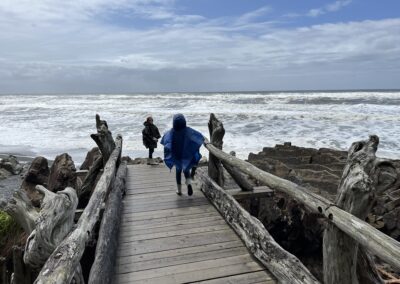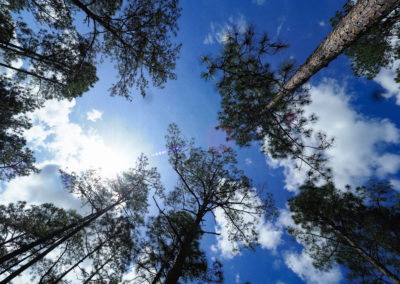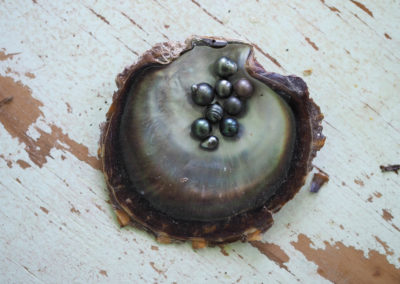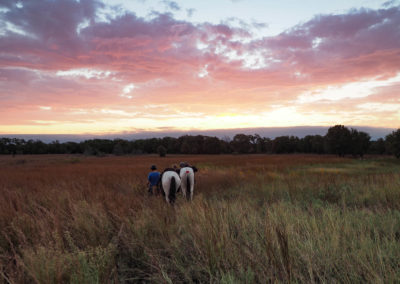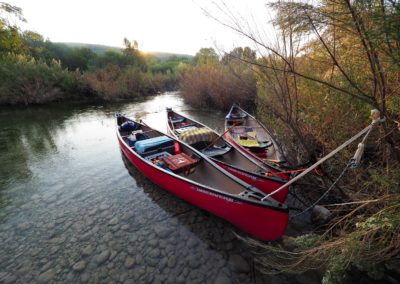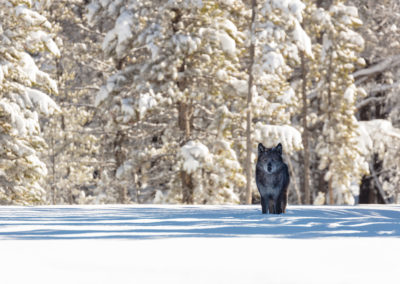
A pair of penguins perches on a boulder in the Galapagos Islands. Pam LeBlanc photo
In a flash of furiously flapping wings and a streak of bubbles, a bird the size of a football shoots underneath me.
That first glimpse of a penguin – in the wild, while I’m snorkeling in the Galapagos Islands – tops a highlights reel that includes iguanas that swim in the ocean, tortoises the size of laundry baskets, and birds whose feet look like they’ve been dipped in melted blue crayons.
Spending time in the Galapagos is like watching an episode of a nature documentary. Sea turtles as big as car tires tumble in the surf, in nature’s version of the beach scene in “From Here to Eternity.” Sea lions pinwheel in the water, and iguanas pile on top of one another on boulders. Birds wheel and screech, and at night, sharks circle in inky waters.

A sea lion and her pup rest on a beach in the Galapagos Islands. Pam LeBlanc photo
A week aboard The Theory
If you’re into wildlife, put the Galapagos on your list. I spent a week aboard Ecoventura’s small cruise ship, The Theory.
With just 11 passengers (the ship can hold 20) and two certified naturalists, I felt like I’d landed in a college biology class that was taking the field trip of a lifetime.
For me, it came down to the animals. Above water and below, I saw critters I’d only seen in books and zoos. Because predators are few, they seem unafraid – and they’re easy to photograph.
Plus, I learned a lot of history.
Charles Darwin visited the islands for just five weeks in 1835, but they inspired his most famous work – the theory of evolution.
Penguins
Fewer than 2,000 Galapagos penguins exist in the wild. The endangered birds, which weigh about 5 pounds and look like they’re wearing itsy-bitsy tuxedos, zip through the water around Bartolome Island at breakneck speed.
They don’t seem to care about snorkelers. The three we encountered were focused on hunting the nearly invisible, inch-long fish swirling in front of my mask.
I plunged underwater to get a better look. Their eyes look like dried cloves, set in a bed of dense, sleek feathers. They zigzagged toward me, changing direction on a dime. They raced right up to my husband’s face, propelled by a pair of boomerang-shaped wings.
These birds are the only penguins that live north of the equator. Cold water currents merge here, allowing them to survive in the tropical climate. But climate change, pollution and other issues all threaten their numbers. (Donate to the World Wildlife Fund to help protect them here.)
Read more: At Post Office Bay in the Galapagos, you need patience – but no stamp – to deliver mail
Fish in the Galapagos Islands

Passengers from Ecoventura’s small cruise ship, The Theory, hike in the Galapagos Islands. Pam LeBlanc photo
I love the water, and the Ecoventura cruise included an average of two snorkeling excursions per day.
The ship provided wetsuits, fins, masks, and snorkels, but I brought my own mask to ensure a proper fit. Knowing the water temperatures in the Galapagos can be cool, I brought a separate hoodie to keep my head warm, too. I was glad I had it.
During our first snorkel, we drifted along a rocky shoreline littered with snoozing sea lions. A few of the sleek animals slid into the water to check us out, then showed off with pirouettes and twirls, like a troupe of ballerinas.
Another time, we swam over a school of hotdog-sized fish so dense we couldn’t see through it. From above, the school looked like a single, bus-sized organism, morphing in shape as it advanced.
Yellow, orange, and blue starfish, some tipped with what looked like chocolate chips, clung to rocks; prickly urchins gathered in crevices like dust bunnies.
White tip sharks swirled beneath us, disinterested, and three spotted eagle rays glided past in formation. In between were yellow puffers, burrfish, surgeon fish and an eel or two.
Read more: Dipping into nature in Mexico’s Baja California Sur
Tortoise in the Galapagos Islands
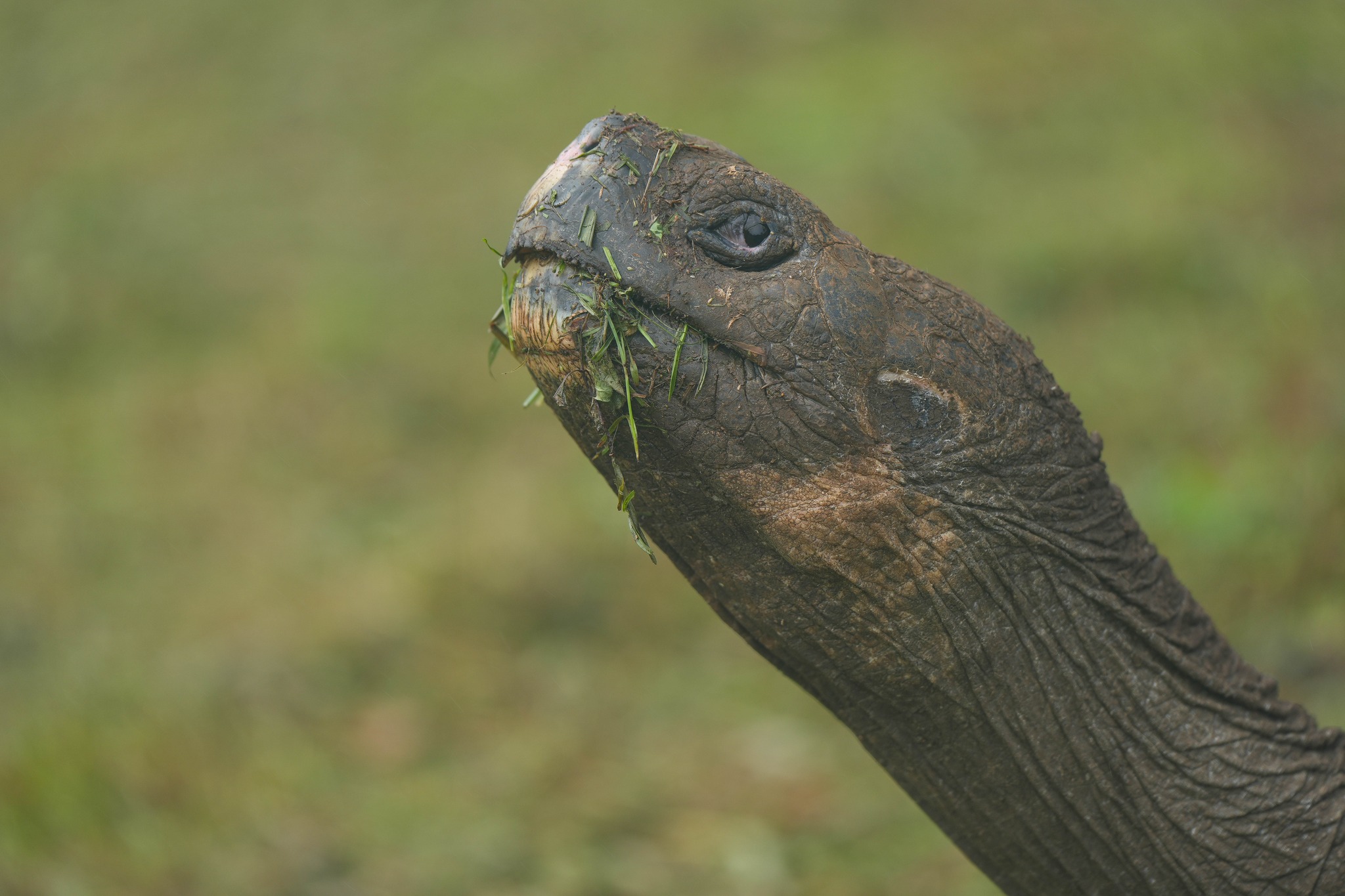
A giant tortoise stretches out its neck at a preserve in the Galapagos Islands. Pam LeBlanc photo
We devoted an entire day to the Galapagos Islands’ famous tortoise.
Scientists believe the tortoise – possibly just a single female, carrying sperm – arrived from Chile via ocean currents more than 2 million years ago. She laid eggs and the tortoise slowly spread to different islands. Over thousands of years, those that landed on dry islands developed a saddle-shaped carapace that allowed them to stretch their necks to eat pads from tall cactus trees. Those on wetter islands ate grass and plants that grew closer to the ground.
In all, 15 species of giant tortoise have been identified in the Galapagos.
When whalers and buccaneers first came to the Galapagos, they caught the slow-moving animals for food, ultimately decimating the population. An estimated 10 percent survived. By 1959 scientists estimated just 32,000 were left.
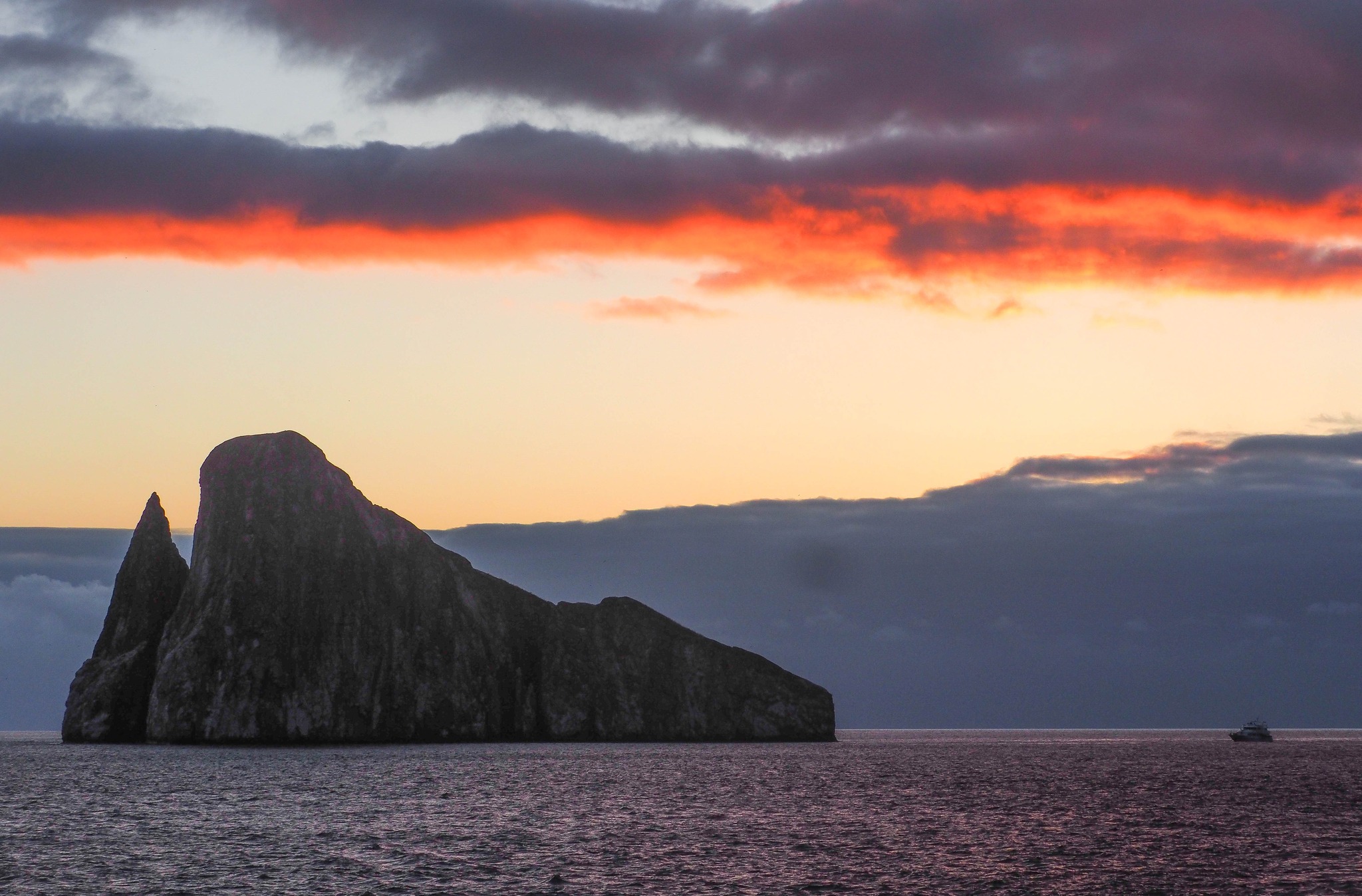
The sun sets in the Galapagos Islands. Pam LeBlanc photo
We made the 45-minute shuttle ride to El Chato Tortoise Reserve on Santa Cruz Island to see the huge reptiles lumbering through grassy fields and soaking in ponds. Apparently, they’re gassy creatures. Bursts of bubbles rose from their hindquarters as they lolled in the water.
Like white-tailed deer in Texas, you can spot them along roadways and in random pastures. Look for the tell-tale, sweet potato shaped droppings they leave behind.
At the Charles Darwin Research Station in Puerto Ayora, we learned about efforts to protect and breed baby tortoises. We got to see baby tortoises – some the size of grapefruit, others as big as cantaloupes – mosey around their pens.
During a previous visit to the facility in 2012, I met Lonesome George, the last known surviving Pinta tortoise. Scientists estimate he was more than 100 years old when he died just a few months later. Today he’s stuffed and displayed inside a glass case at the facility.
We dropped by to pay our respects.
Read more: Discover the raw beauty, warm culture, and painful past of the far-flung Marshall Islands
Iguanas

An iguana creeps through a field of ice plants on Isla Plaza Sur in the Galapagos Islands. Pam LeBlanc photo
Another famous Galapagos resident, the marine iguana, feeds on algae that grows on rocks beneath the ocean’s surface. Three times we spotted the animals, whose knobby heads reminded me of a cat-sized version of Godzilla, dog-paddling through the surf. We saw many more on land, lumbering across sandy beaches, climbing across lava outcroppings, and basking in the sun.
A different type of lizard
We saw land iguanas, too.
At Isla Plaza Sur, a small islet that bristles with spine-covered cactus trees that look like prickly pears on tall trunks, the reptiles loll on rocks.
Their wide mouths and yellow skin give them a slightly dopey appearance, and I couldn’t stop photographing them. They looked like plastic toys against the island’s carpet of reddish ice plants.
But the balance is off on Isla Plaza Sur. Scientists believe introduced mice have partially caused the ongoing decline in the island’s cactus, the reptiles’ main food source.
We walked past a hillside where scientists have planted new cactus inside wire baskets in an effort to restore the prickly, once thick forest.
Birds, birds, birds

A blue-footed boobie protects her chick in the Galapagos Islands. Pam LeBlanc photo
From blue-footed boobies that look like they’re wearing brightly colored swim fins to male frigatebirds that inflate red pouches to attract mates, the birds in the Galapagos are showy, colorful, and abundant.
Bright pink flamingos stroll across brackish ponds, oystercatchers wade through shallow water, and gulls swoop overhead.
At North Seymour Island, boobies and frigatebirds congregate in huge numbers. Depending on the season, visitors can watch their elaborate dancing rituals or see them nesting with young on the ground. Look for hawks, finches, and flightless cormorants, too.
If You Go

Getting there:
From Austin, fly to Quito, Ecuador, where you’ll overnight before taking a small plane to the Galapagos Islands.

Stay:
We booked a seven-night cruise with Ecoventura, which offers two itineraries – the north islands or the south. We took the south.
Do:
Ecoventura’s cruise itinerary is packed with opportunities to snorkel, paddle, hike and visit small island communities.

Insider tip:
Most cruises provide snorkeling equipment, but to ensure a good fit (and you’ll want one, to see wildlife you’ll see nowhere else on the planet) bring your own mask.









